Today Current Affairs: 7th July 2022 for UPSC IAS exams, State PSC exams, SSC CGL, State SSC, RRB, Railways, Banking Exam & IBPS, etc
Table of Contents
Fields Medal:
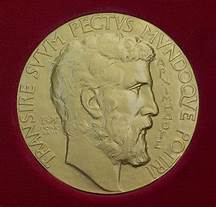
Ukrainian mathematician Maryna Viazovska, chair of Number Theory at École polytechnique fédérale de Lausanne (EPFL) in Switzerland, was named as one of four recipients of the 2022 Fields Medal, an honour that is often described the Nobel Prize in mathematics.
- The other winners were French mathematician Hugo Duminil-Copin of the University of Geneva; Korean-American June Huh of Princeton; and Briton James Maynard of the University of Oxford.
- Viazovska, 37, is only the second female Fields Medalist, after the Iranian Maryam Mirzakhani in 2014.
Fields Medal:
- The Fields Medal is awarded by the International Mathematical Union (IMU), an international non-governmental and non-profit scientific organisation that aims to promote international cooperation in mathematics.
- The Fields Medal is awarded every four years to one or more mathematicians under the age of 40 in recognition of “outstanding mathematical achievement for existing work and for the promise of future achievement”.
- The honour carries a physical medal of 14K gold.
- There is also a cash award of CAD 15,000.
- Indian-origin winners: Among the more than 60 mathematicians who have been awarded the Fields Medal since 1936, there are two of Indian origin — Akshay Venkatesh of the Institute for Advanced Study at Princeton, who won in 2018, the last time the honour was announced, and Manjul Bhargava of the Department of Mathematics at Princeton University, in 2014.
Karakalpakstan:

At least 18 people were killed and 243 wounded during last week’s government crackdown on protests in Uzbekistan’s autonomous province of Karakalpakstan.
- The protests had broken out in response to the government’s plan to restrict the region’s long-held autonomy.
- The name Karakalpakstan is derived from the Karakalpak people, an ethnic minority group of around 2 million. Karakalpak translates to ‘black hat’, referring to their traditional headgear.
- The Karakalpaks consider themselves to be a distinct cultural group in Uzbekistan.
- Their Turkic language – Karakalpak – is closely related to Kazak.
- Their separate language is a crucial aspect of their cultural identity.
- In their genealogical narrative, the Karakalpaks claim to share a common point of origin with the neighbouring Kazakhs, Uzbeks and Turkmen, but believe that over time they diverged from the others.
- This narrative marks the Karakalpaks as culturally separate from their neighbouring groups.
- When Uzbekistan declared its independence from the Soviet Union in August 1991, Karakalpakstan was formally recognized as an autonomous republic in Uzbekistan’s constitution of 1992, and has the right to secede from on the basis of a nation-wide referendum.
Critical Minerals:
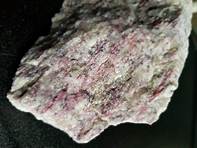
India and Australia decided to strengthen their partnership in the field of projects and supply chains for critical minerals.
- Critical minerals are elements that are the building blocks of essential modern-day technologies, and are at risk of supply chain disruptions.
- These minerals are now used everywhere from making mobile phones, computers to batteries, electric vehicles and green technologies like solar panels and wind turbines. Based on their individual needs and strategic considerations, different countries create their own lists.
- However, such lists mostly include graphite, lithium and cobalt, which are used for making EV batteries; rare earths that are used for making magnets and silicon which is a key mineral for making computer chips and solar panels.
- Aerospace, communications and defence industries also rely on several such minerals as they are used in manufacturing fighter jets, drones, radio sets and other critical equipment.
- As countries around the world scale up their transition towards clean energy and digital economy, these critical resources are key to the ecosystem that fuels this change.
Nairobi Flies:

Around 100 students of an engineering college in East Sikkim have reported skin infections after coming in contact with Nairobi flies.
- Nairobi flies, also called Kenyan flies or dragon bugs, are small, beetle-like insects that belong to two species, Paederus eximius and Paederus sabaeus.
- They are orange and black in colour, and thrive in areas with high rainfall, as has been witnessed in Sikkim in the past few weeks.
- Like most insects, the beetles are attracted by bright light.
- Usually, the insects attack pests that consume crops and are beneficial for humans — but at times, they come in contact with humans directly are cause harm.
- These flies do not bite, but if disturbed while sitting on anyone’s skin, they release a potent acidic substance that causes burns.
- This substance is called pederin, and can cause irritation if it comes in contact with the skin, leading to lesions or unusual marks or colouring on the skin.
- The skin begins to heal in a week or two, but some secondary infections can occur, especially if the victim scratches the irritated skin.
- Nairobi flies is a species of insect native to East Africa. Major outbreaks have happened in Kenya and other parts of eastern Africa.
- Outside Africa, outbreaks have happened in India, Japan, Israel, and Paraguay in the past.
African Union Is Celebrating Its 20th Anniversary:
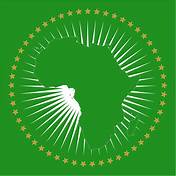
The African Union is celebrating its 20th Anniversary on 9th of July 2022.
- The African Union (AU) is a continental body consisting of the 55 member states that make up the countries of the African Continent
- In 1963, the Organization of African Unity was founded by the independent states of Africa.
- The organization aimed to promote cooperation between African states.
- The 1980 Lagos Plan of Action was adopted by the Organization of African Unity.
- The plan suggested that Africa should minimize reliance upon the West by promoting intra-African trade.
- In 2002, the Organization of African Unity was succeeded by the African Union, which had as one of its goals to accelerate the “economic integration of the continent”.
Single-Crystalline Scandium Nitride:

Researchers at Bengaluru’s Jawaharlal Nehru Centre for Advanced Scientific Research (JNCASR) have discovered a new material called “single-crystalline scandium nitride (ScN)” that can convert infrared light into renewable energy.
- To accomplish this feat, scientists used a scientific phenomenon known as polariton excitations, which occur in tailored materials when light couples with either collective free electron oscillations or polar lattice vibrations.
- Infrared light is beyond the light range that is visible to the human eye, and falls between the visible light and microwave regions (the wavelength is longer than visible light).
- Infrared sources, emitters, and sensors are in high demand across a wide range of industries, including electronics, healthcare, defense and security, and energy, further infrared polaritons in scandium nitride will enable its use in a variety of such devices.
Key Highlights of Single-Crystalline Scandium Nitride (ScN):
- It has high efficiency in emitting, detecting, and modulating infrared light, making it useful for solar and thermal energy harvesting, as well as optical communication devices.
- Scientists have carefully controlled material properties to excite polaritons (a quasi-particle) and achieve strong light-matter interactions in single-crystalline scandium nitride (ScN) using infrared light.
- As these polaritons in ScN are also compatible with modern complementary-metal-oxide-semiconductor (CMOS) or Si-chip technology and, as such, could be easily integrated into on-chip optical communication devices.
- These exotic polaritons in the ScN can be utilized for solar and thermal energy harvesting.
TiHAN: First Autonomous Navigation Facility
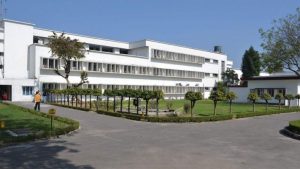
Ministry of Science & Technology has inaugurated “Technology Innovation Hub on Autonomous Navigation” or TiHAN, in IIT- Hyderabad, which is a first “Autonomous Navigation” facility.
- It is seen as one of the steps toward India’s vision of ‘Atmanibhar Bharat’, ‘Skill India’ and ‘Digital India’.
- TiHAN is a multidisciplinary initiative, which aims at making India a global player in the futuristic and next-generation “Smart Mobility” technology.
- The multi-departmental initiative includes researchers from electrical, computer science, mechanical and aerospace, civil, mathematics.
- At present, there is no such testbed facility in India to evaluate the autonomous navigation of vehicles.
- Therefore, it is envisioned to address this gap by developing a fully functional and exemplary testbed facility dedicated to Connected Autonomous Vehicles (CAVs).
- Connected vehicles use technology to either communicate with each other, connect with traffic signals, signs, and other road items, or obtain data from a cloud. This information exchange helps with safety and improves traffic flow.
India’s Supercomputing Capabilities:
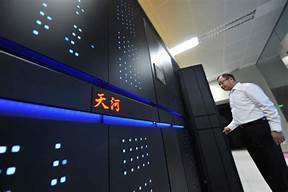
As per the global ranking service of super-computers (Top 500), India has only 3 top-ranked supercomputers among 500 and none in the top 100.
- (Param Siddhi (5.27 PFlops), Param Ganga (1.66 PFlops) and Pratyush supercomputer (Indian Institute of Tropical Meteorology’s))
- India had 2 in the top 100 in 2020
- World: China and the US account for nearly two-thirds of the top 500 supercomputers in the world.
- Frontier Supercomputer: The world’s fastest supercomputer, Frontier, located at the Oak Ridge National Laboratory, offers a peak performance of 1,685 PFlops.
Benefits of Supercomputers:
- High-speed computation: E.g., in May 2020, IBM’s Summit supercomputer, helped researchers find drug compounds that could stop the covid-19 virus from infecting host cells in just 2-3 days.
- Other areas: chemistry formulations, protein folding, biomedicine, space (for satellite placements) and climate research.
Purchasing Managers Index (PMI):

As per the RBI, India’s services sector purchasing managers’ index (PMI), climbed to 59.2 in June, its highest reading in 11 years.
- Purchasing managers’ indexes are economic indicators derived from monthly surveys of private sector companies.
- IHS Markitproduces the PMI for India.
- The index is derived after a survey of 500 manufacturing companies and 350 services sector companies.
- A level above 50 denotes expansion in activity, while anything below signals contraction.
- As services constitute a big bulk of our economy’s output, the survey’s findings spell good news.




